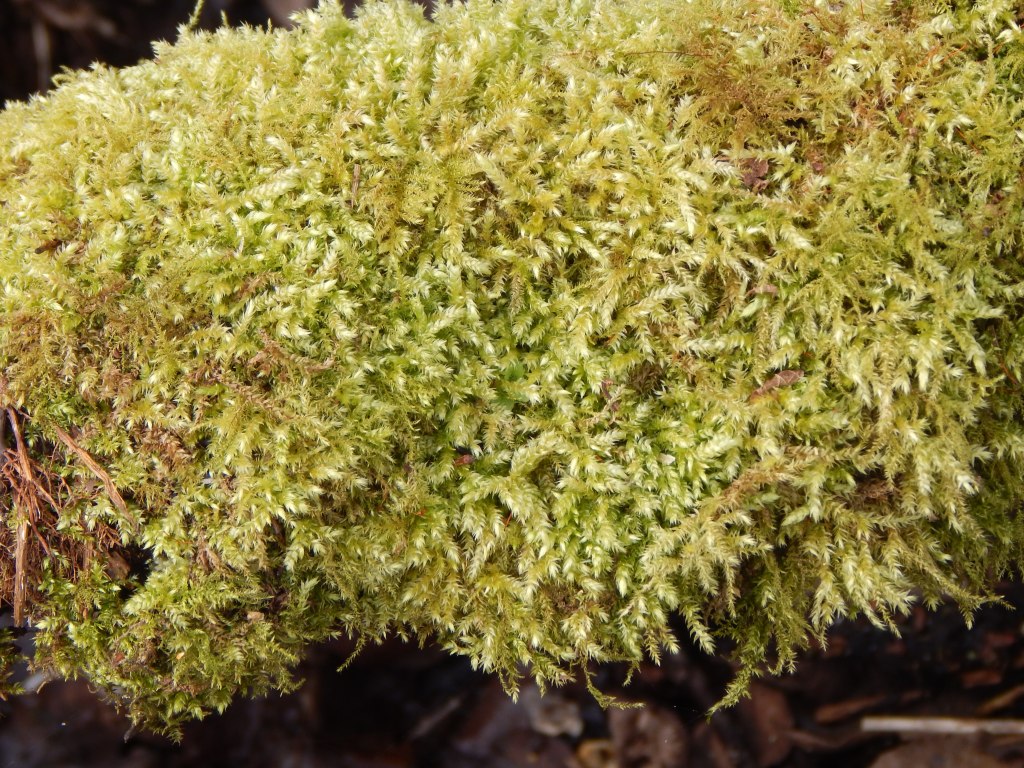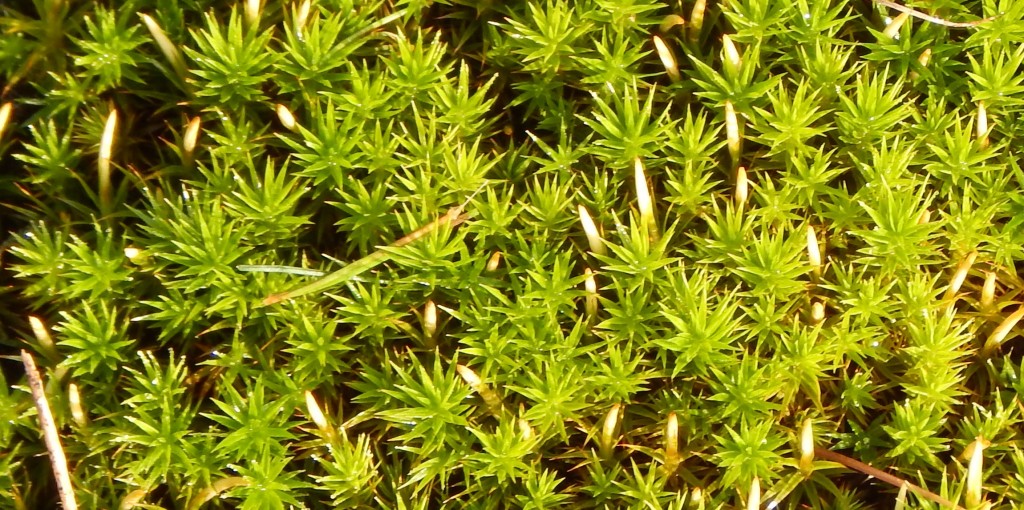
[183] Hypnum cupressiforme, Cypress-leaved Plaitmoss – and Other Moss
Introduction
Hypnum cupressiforme, Cypress-leaved Plaitmoss, is one of about eight hundred species of moss found in the UK. It is also called Hypnum Moss and I am taking it as one representative species to cover all mosses.
Taxonomy
Kingdom – Plants
Clade – Embryophytes (Land Plants)
Division – Bryophyta (Mosses)
Class – Bryopsida (Almost all Mosses)
Subclass – Bryidae
Superorder – Hypnanae
Order – Hypnales (Feather Mosses)
Family – Hypnaceae
Genus Hypnum
Scientific Name – Hypnum cupressiforme
Name
The Cypress (Cupressus and related genera) is a coniferous tree that escaped my selection process but will be mentioned soon in [190] Juniper. The similarity in appearance is obvious.
Hypnum comes from the Greek Hypnos, sleep, from its use in pillows. Cupressi-forme means Cypress-form. [The letters U and Y are almost interchangeable in words derived from Ancient Greek.]
Mosses
We have to go up the taxonomic tree to a level I don’t usually use.
The land plants, Embryophytes, consist of Vascular plants (that’s all the flowering plants and conifers and ferns), Mosses and two other fairly obscure small groups [223] Liverworts and Hornworts.
Almost all of the species of plants that we see are vascular plants. They have a vascular system, very loosely like a blood system, which transports water and nutrient substances round the plant.
Mosses, without the vascular system to support them, have just very small stems and leaves, and no real roots. The leaves, normally a single cell in thickness, have projecting hairs that act as roots.
There are about 12 000 species of moss, of which about eight hundred are found in the UK. Because they are small and not easily identified exactly with the naked eye, I won’t attempt to identify most of my pictures to species level. My identification app confidently gives me about half a dozen species, most of which are probably wrong. (Some of them are not found in Europe!) I am fairly confident that some of my pictures are Hypnum cupressiforme. Maybe your identification skills are better than mine.
Alternation of Generations
[You can leave this section out. There won’t be a test later.]
Like animals, vascular plants are usually diploid, having two sets of chromosomes. They reproduce sexually by producing spores or seeds, which are haploid with just one set of chromosomes. The haploid cells (gametophytes) combine to form a new diploid organism (sporophyte.) So, the generations alternate. For vascular plants the diploid sporophyte (the actual plant) is the dominant form and the gametophytes (pollen and seeds) are much smaller and short-lived. Of course, animals are the same, sometimes with complications, and some plants complicate the process with more than two sets of chromosomes.
Mosses (and [223] Liverworts and Hornworts) are the other way round and the dominant form is the gametophyte. Each tiny piece of moss is haploid and is either male or female.
Fungi and [324] Slime Moulds have a different system of reproduction but are dominated by the haploid form. Algae ([079], [151] and [353]) are diverse and do not all have an alternation of generations.
Hypnum cupressiforme
This species has prostrate, creeping stems, which form dense mats. Overlapping leaves give the impression of the Cypress tree.

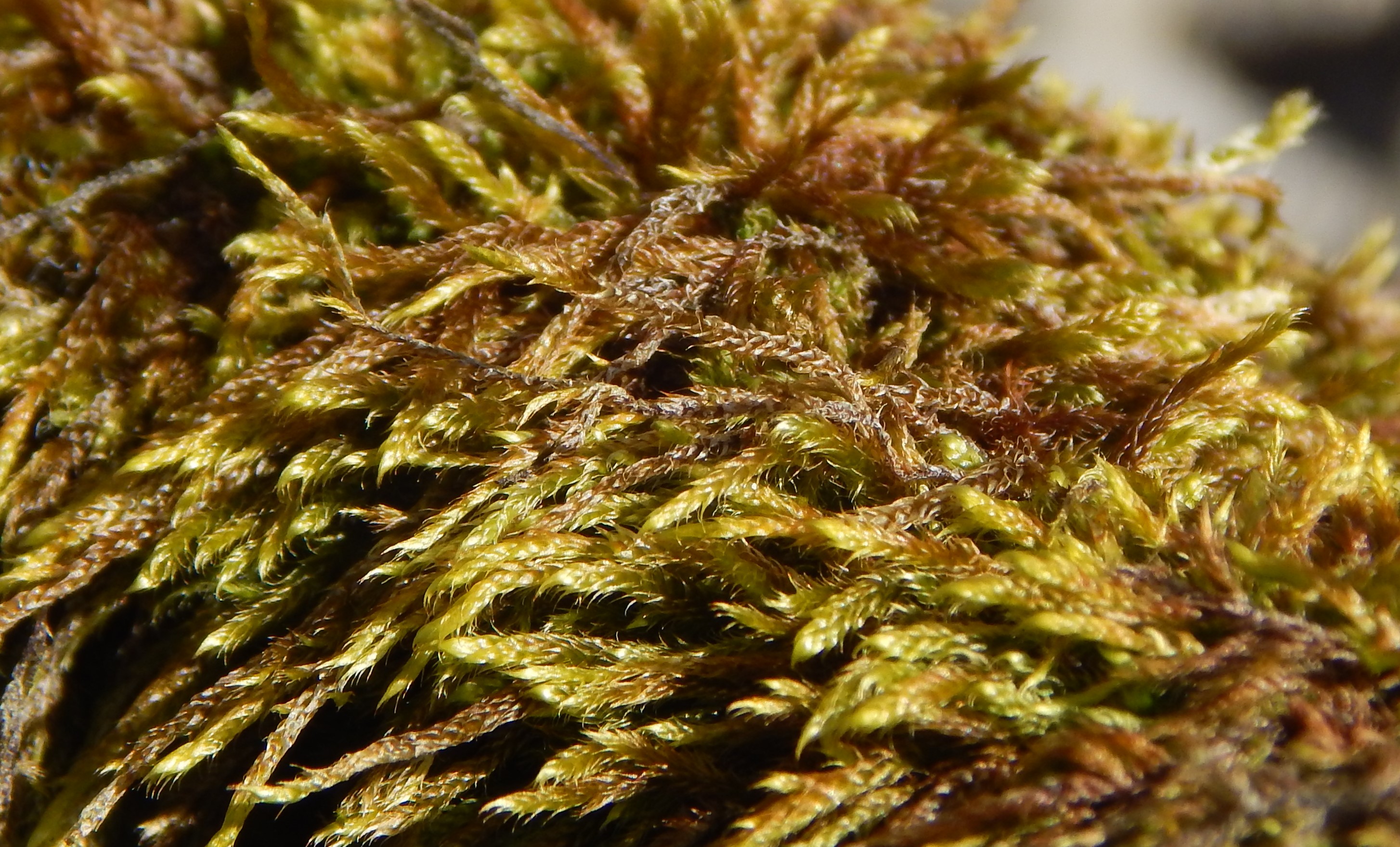
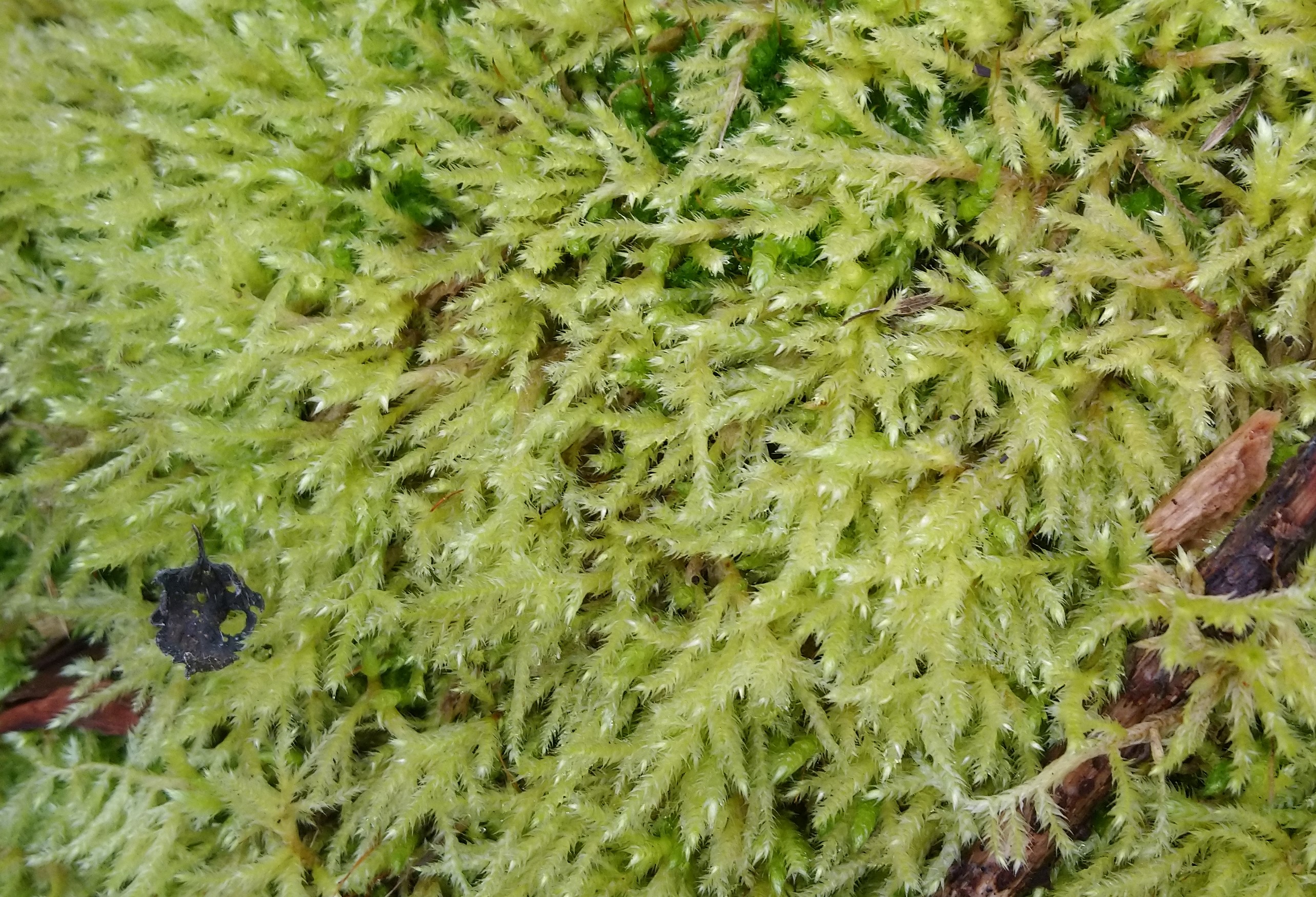
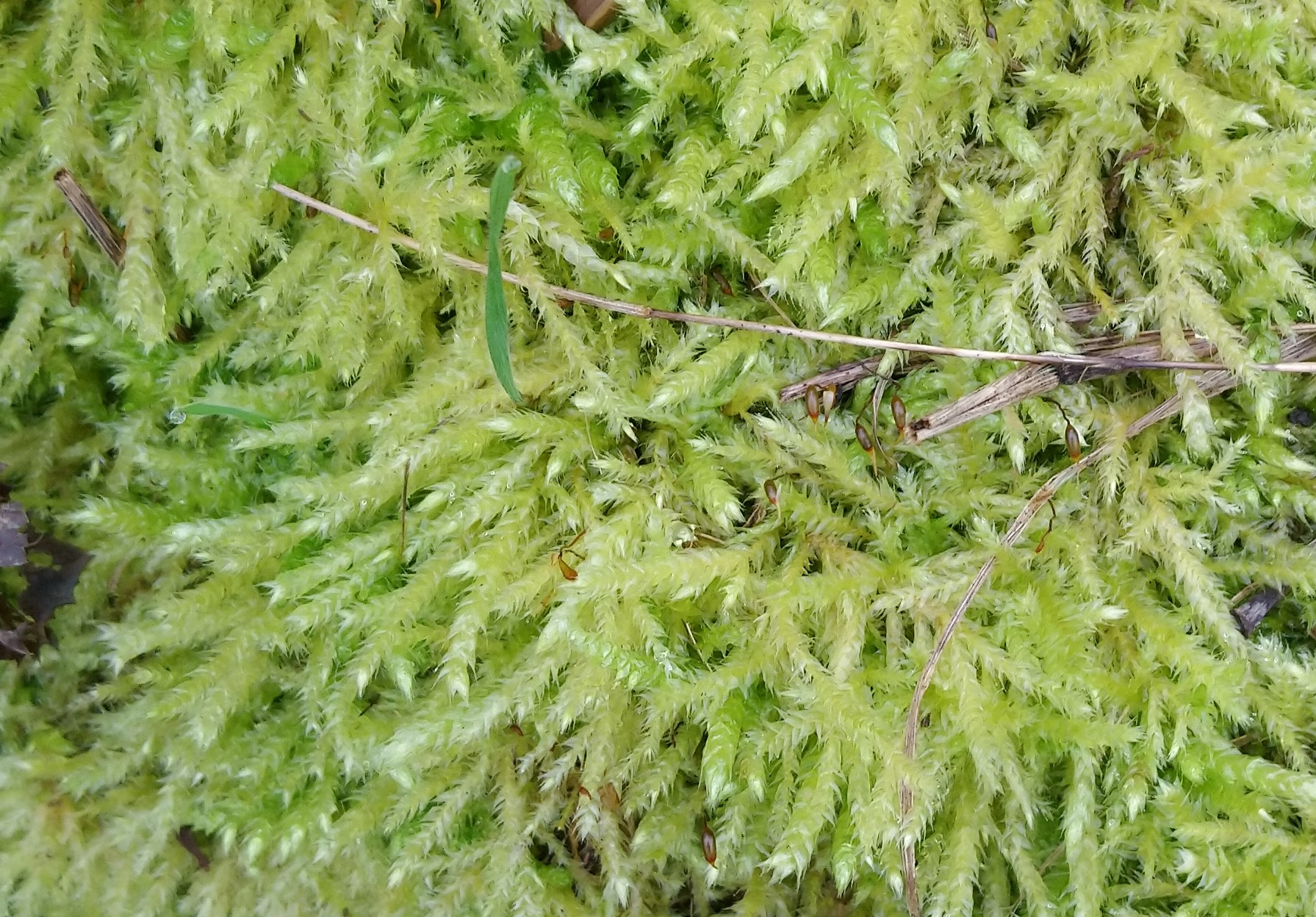
I am hoping that the pictures above are correctly identified. The next ones I will leave as unidentified mosses.
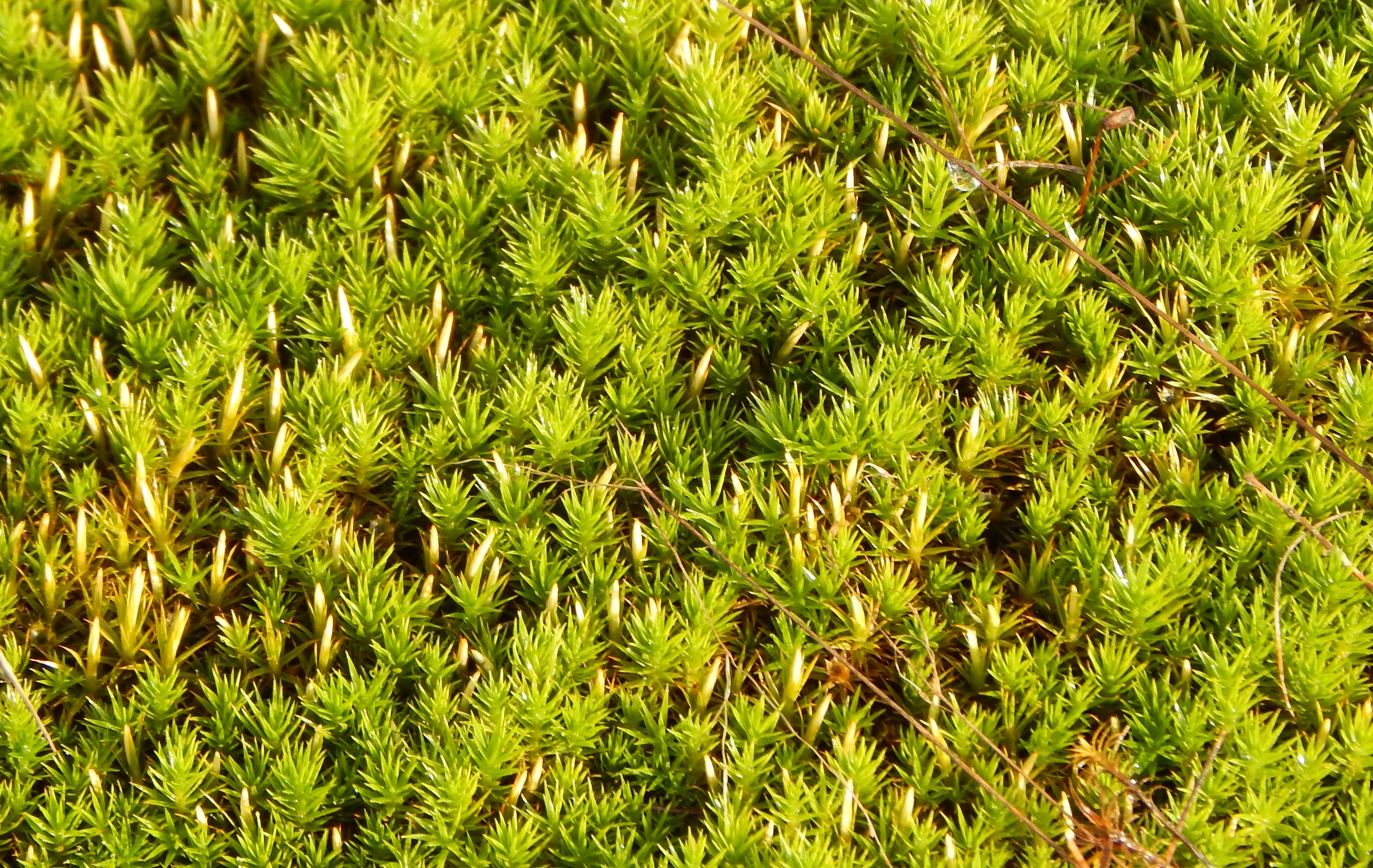



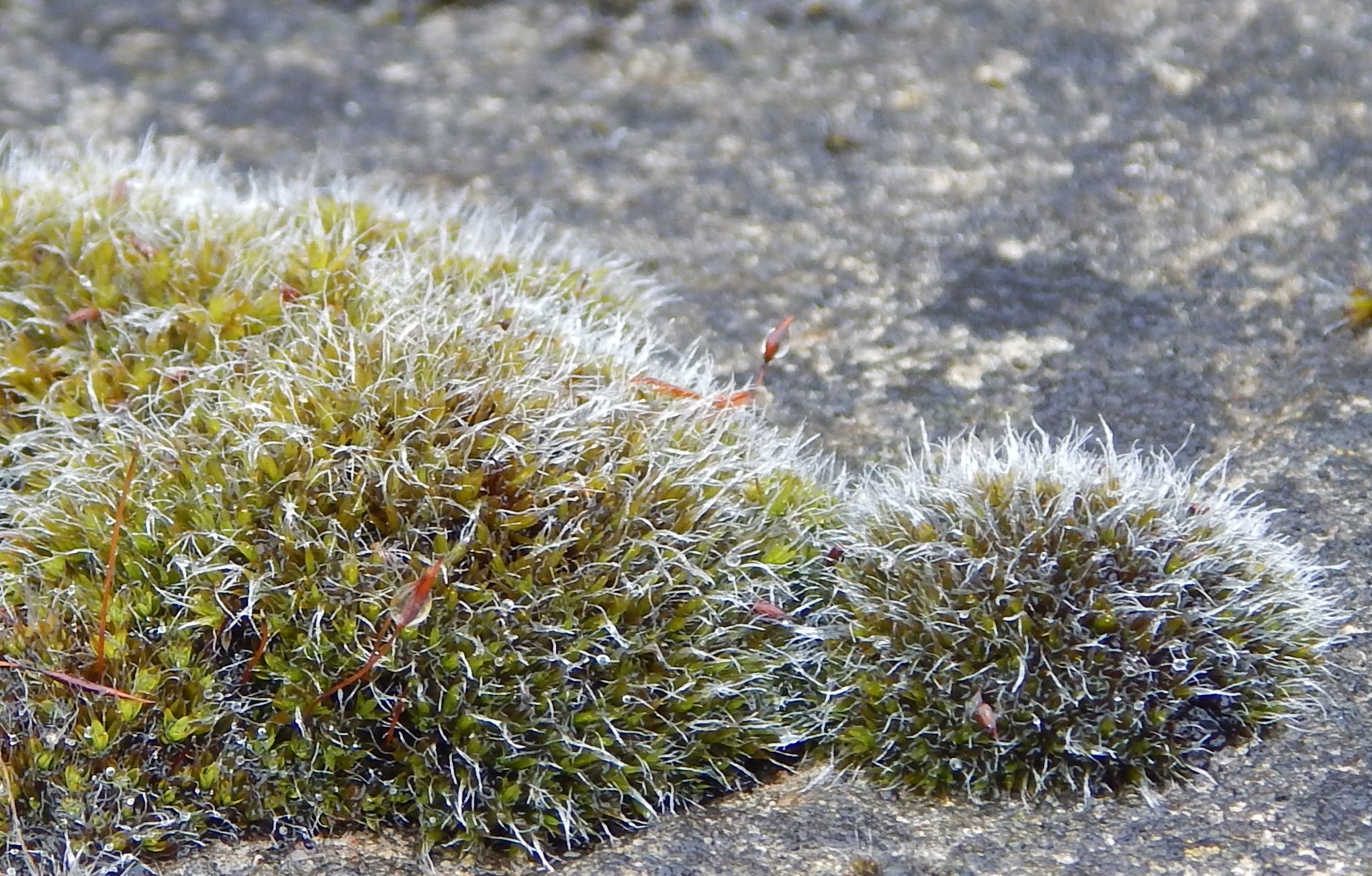
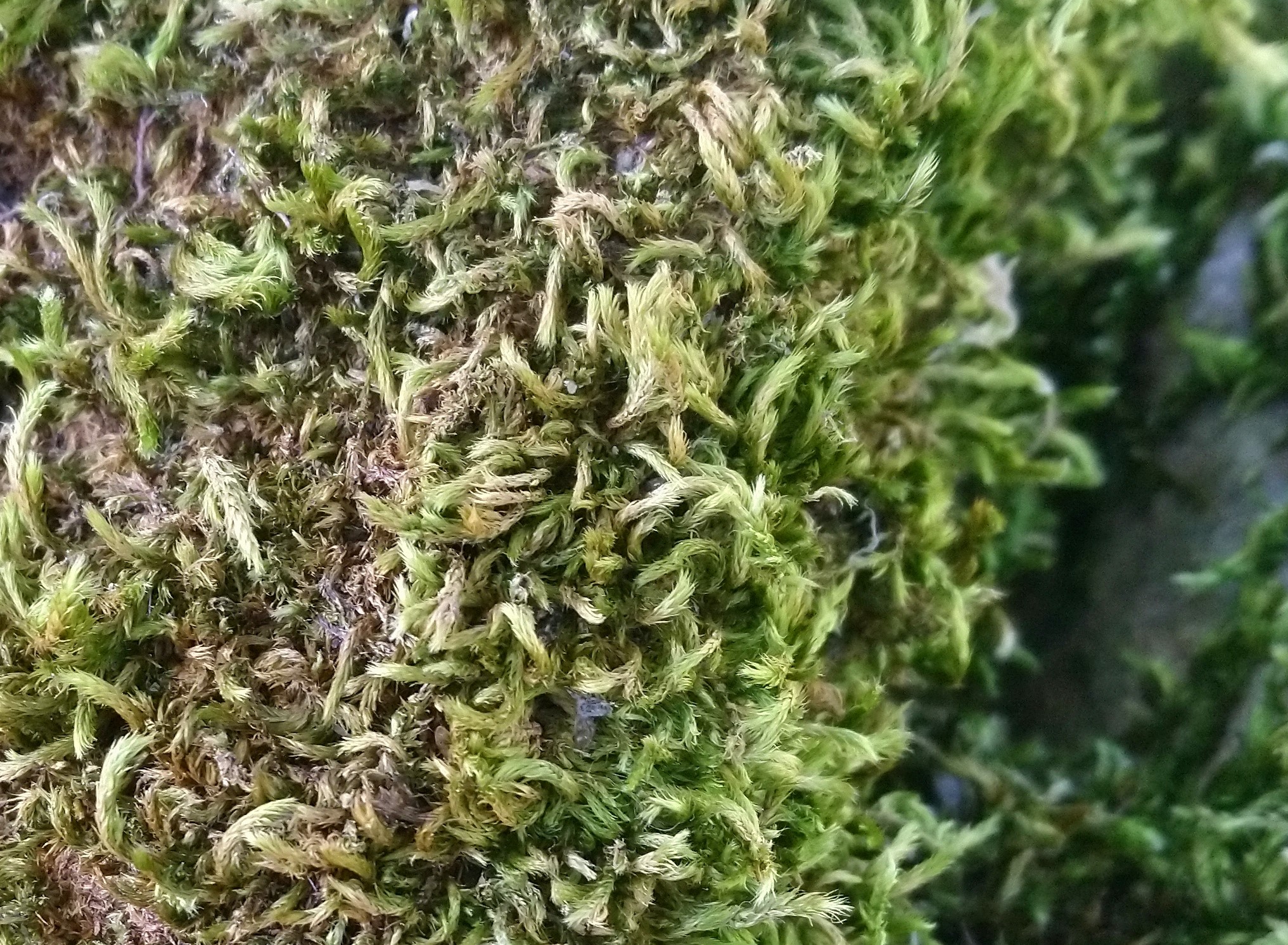

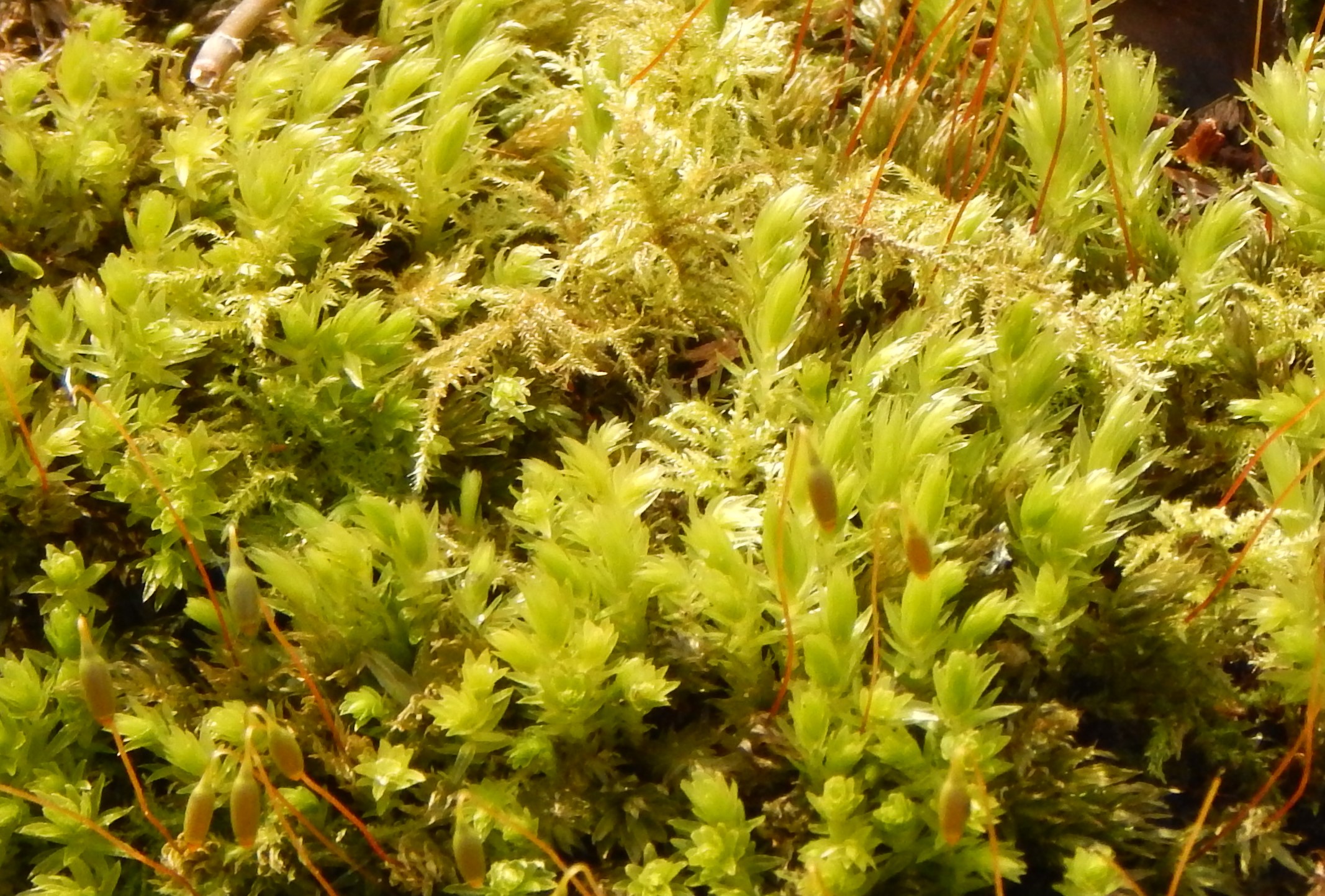
The plants are dioicious, with separate male and female plants. Each one bears spores on a reddish brown stalk – the sporophyte.
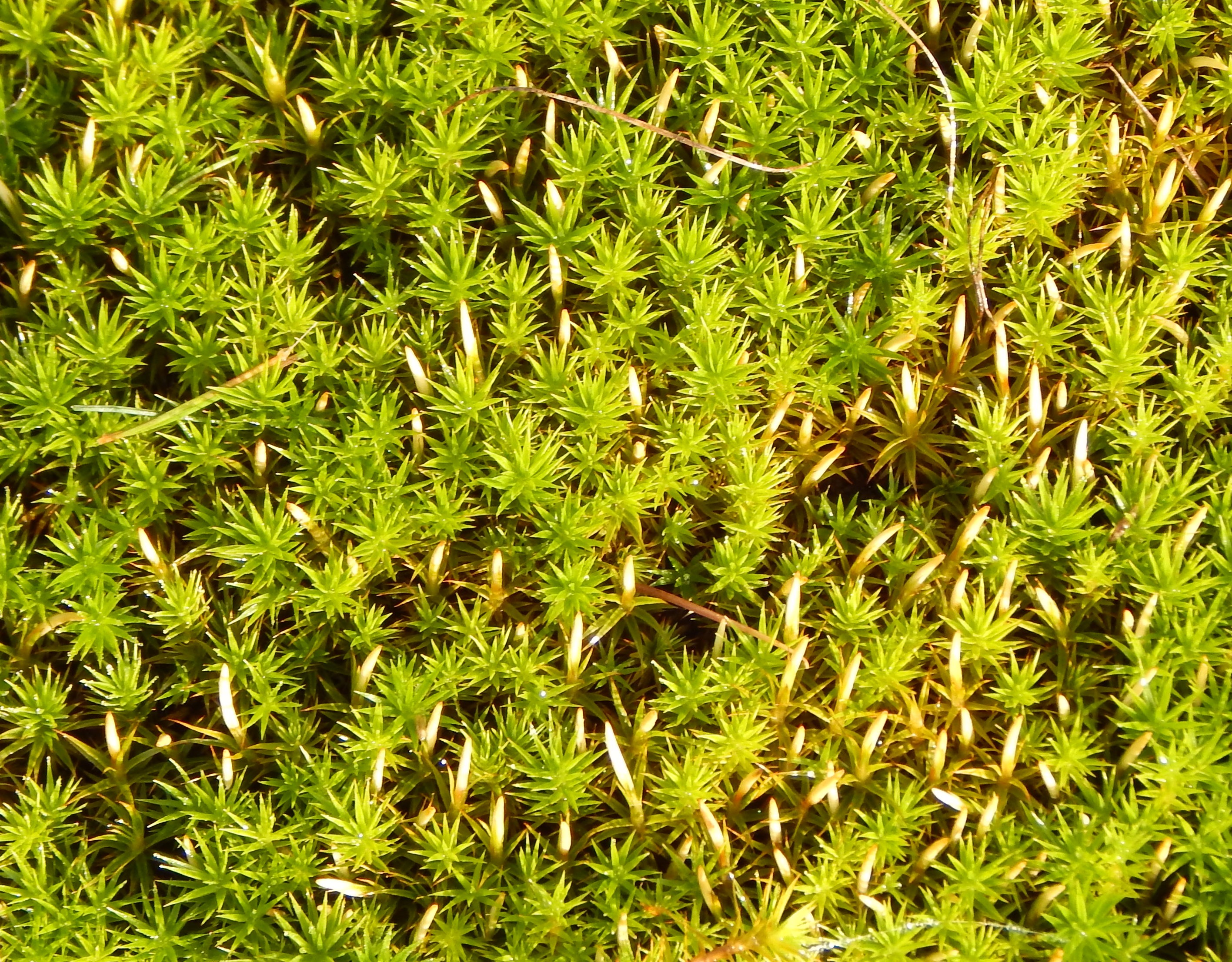

These last two pictures are both unidentified moss species.
Habitat and use
Hypnum cupressiforme has an almost worldwide distribution. Like many mosses, it grows on tree trunks, logs, walls and other surfaces.
It was traditionally used to fill pillows and mattresses.
Other Notes
Mosses are often found on the ground or on dead trees in woods and other places – on trees or walls – where they may be co-located with lichens.
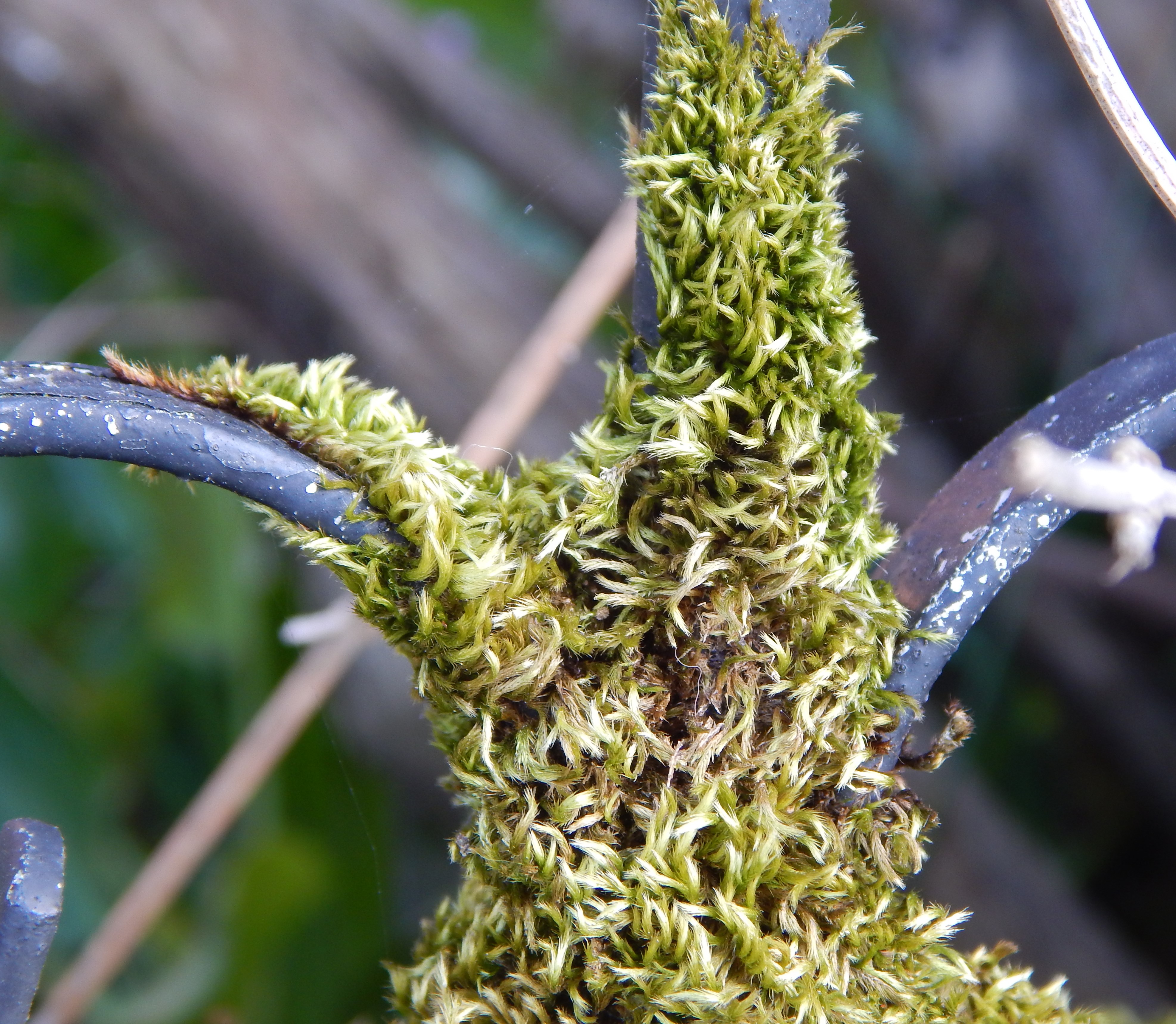
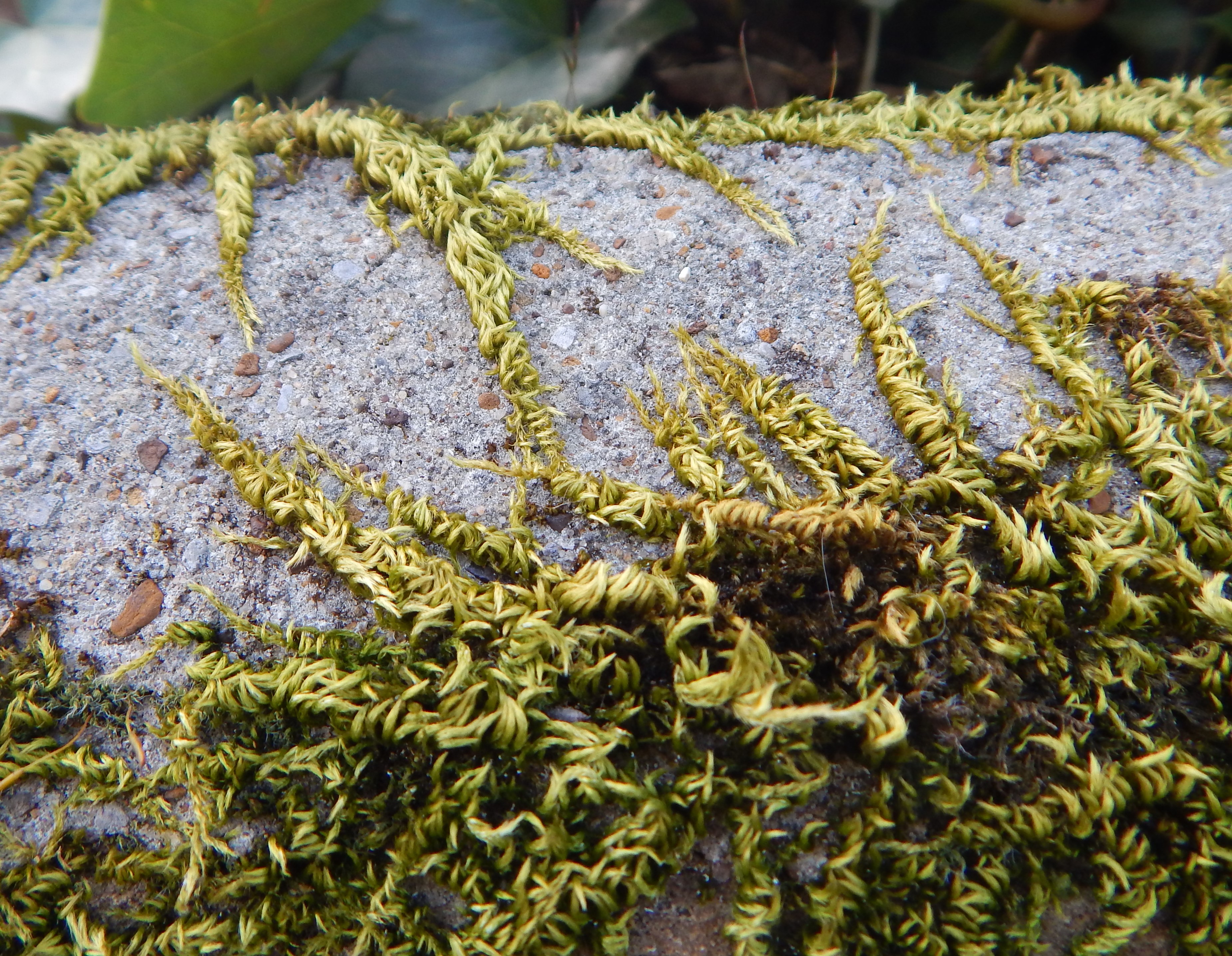
See also
This is my only blog about mosses. You can study bryology but you will need a very good camera or microscope.
